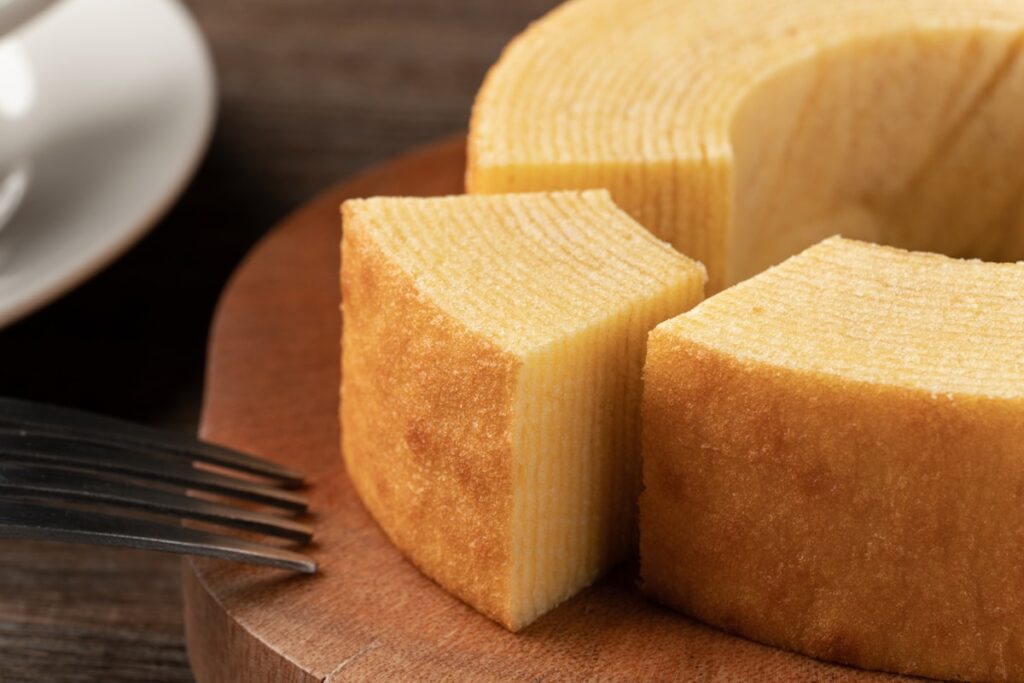[ad_1]
Walking into the dessert section of a supermarket, bakery, or convenience store in Japan, your eye will likely be drawn by a collection of colorful round desserts. This is baumkuchen, a German cake popular for its unique shape and wide variety of flavors.
This humble pastry, which began its life in Europe, has risen to become one of the most popular desserts in Japan. The story of baumkuchen’s arrival in Japan is one of creativity and industry flourishing even during the darkest of times.
What Is Baumkuchen?
The German word “baumkuchen” literally translates to “tree cake.” It refers to the cake’s round shape and layered structure, which is visually similar to the rings of a tree.
Historians debate the origin of Baumkuchen, with several towns in Germany, Austria, and Hungary claiming to be its birthplace. Baumkuchen first definitively appeared in a cookbook in 1581. The text, “Ein neu Kochbuch” (“A New Cookbook”), was written as a manual for chefs-in-training. Baumkuchen was one of 2000 recipes included in the book and was listed as a popular wedding cake due to its ring-like shape.
Chefs make baumkuchen by brushing layers of batter onto a spit. They rotate the spit near a heat source until all sides are evenly cooked. The chef then brushes on more batter during the baking, creating the dessert’s famous layered look. They allow each layer to cook before the next is added, resulting in the distinctive brown lines between each one.
The average baumkuchen has between 15 and 25 layers when completed. Most baumkuchen are flavored with butter, sugar, and vanilla. Other popular flavorings include jam, chocolate, nuts, and rum or brandy. Some baumkuchen may be iced or covered with a glaze or layer of hard chocolate.
Advertisements
Karl Juchheim: The Father Of Japanese Baumkuchen
Japan has a rich history of making both sweet and savory dishes from other countries its own. And that’s what happened with baumkuchen.
Confectioner Karl Joseph Wilhelm Juchheim is responsible for introducing baumkuchen to Japan. Initially living with his wife and children in China, Japanese forces captured his family in 1915. While in a prison camp in Ninoshima, off the coast of Hiroshima, Juchheim baked and sold baumkuchen. Japanese authorities allowed him to display his cakes at the Hiroshima Prefectural Products Exhibition Hall in 1919, where they quickly gained popularity.
After the war, Juchheim and his family chose to stay in Japan and continue making and selling baumkuchen. He and his wife, Elise, opened their first shop in Yokohama, but it was destroyed during the Great Kanto Earthquake.
The family relocated to Kobe, where Juchheim ran the company until his death in 1945. His wife, Elise, was deported to Germany for several years but returned and took over the business. Today, Juchheim Co Ltd is still headquartered in Kobe and produces and sells a variety of sweets including baumkuchen.
Ninoshima, where Juchheim baked the first baumkuchen in Japan, continues to celebrate and honor the popular dessert. Bakers still produce Baumkuchen on the island; visitors can watch baking demonstrations or take classes.
In 2019, at the Hiroshima Minato Festival, residents of Ninoshima celebrated the 100th anniversary of baumkuchen in Japan by creating an enormous 20-meter-long cake. The Guinness Book of World Records judged it the world’s longest baumkuchen, a record which it still holds today.
The Ninoshima bakers also tried to make the thickest baumkuchen, reportedly about 40 centimeters thick. Sadly, Guinness didn’t deem this a valid category.
Baumkuchen In Japan Today

Today, you can find baumkuchen sold all over Japan, ranging from specialty bakeries to convenience stores. Baumkuchen is often served at weddings or given as a gift to newly married couples because of its circular shape resembling a wedding ring. It is typically sold by the individual slice, but you can also purchase larger baumkuchen for weddings and other events.
The many layers of baumkuchen are believed to symbolize long life and prosperity. Eating baumkuchen during or before important life events is thus believed to impart good fortune.
The most popular baumkuchen flavor remains the classic vanilla. It has a neutral flavor and pairs well with a variety of meals, drinks and sweets, particularly tea. A fairly light cake, baumkuchen is not overwhelming to the palate but still has an appealing chewy texture.
However, you can find a variety of flavors all over Japan. Popular flavors include chocolate, strawberry, matcha (green tea), sugar-glazed, and coffee.
As with many Japanese sweets, seasonal or local variations are often released. Some of the more exotic baumkuchen flavors you might find in Japan are mango, banana, barley, murasaki-imo (purple potato), and white chocolate.
Try Baumkuchen When Visiting Japan!
While you can buy baumkuchen just about anywhere, you can find the original for sale at 270 Juchheim Co locations around the country. Juchheim stores sell baumkuchen by weight, allowing each customer to buy as much as they can eat – just make sure your eyes aren’t bigger than your stomach! The Juchheim main store in Motomachi, Kobe sells special “Meisterbaum,” cooked by the current master baker and not available for purchase anywhere else.
Tokyo is also home to many locations where baumkuchen can be bought. One is the Tokyo Baumkuchen Bakery, located in Mukojima. Its store typically sells around ten different flavors of baumkuchen. In recent years, it has become known for a moist apple flavor, made with a whole apple per cake. Columbin, a store in Harajuku, sells a distinctive Tokyo-style baumkuchen flavored with rich honey.
Recently, clothing and furniture company MUJI began selling individually wrapped “sticks” of baumkuchen designed to be easily transportable and eaten on the go. MUJI’s baumkuchen is currently available in 23 flavors including orange, lemon, banana, and several varieties of tea.
If you visit Japan, no matter where you go, you are likely to find many varieties of tasty baumkuchen available to purchase, so make sure you try them all!
Sources
お知らせ一覧. Juchheim
バウムクーヘンの由来は?発祥の地や広まった歴史など詳しくご紹介!Enakawakamiya
実は広島 バウムクーヘン伝来100年の秘密. Sankei Shimbun
[ad_2]
Source link



